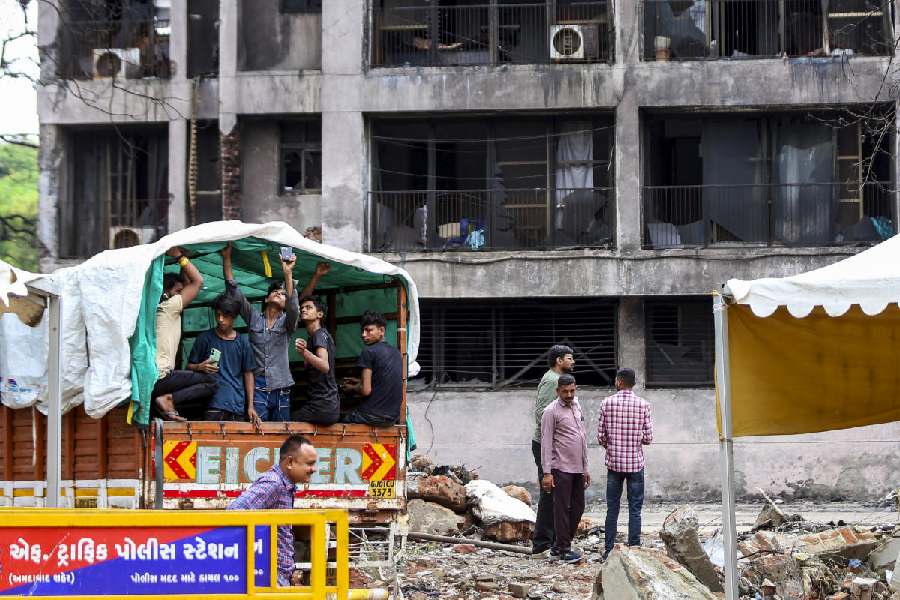
Jorhat, July 21: Lightweight bricks made of fine Brahmaputra sand with a shiny-smooth finish in any given shape, size and colour are the latest products from the stables of the CSIR-North East Institute of Science and Technology (NEIST) here.
Add to this the components of reducing the use of much-needed agricultural soil, reduction of carbon emission and containing the possibility of less flooding by the river during monsoon - NEIST has a sure-fire winner on its hands.
The director of NEIST, D. Ramaiah, said the technology which used Brahmaputra silt for the first time did not burn the sand but used a compressive technique. "The benefits it has to the region - apart from being environment friendly - are energy saving factors in the long run. Using silt as building material will decrease flooding and spreading of the river with the river basin gaining more depth," Ramaiah said.
Sanjay Deori, scientist, applied civil engineering division, NEIST, who was instrumental in developing the bricks, said that the Brahmaputra riverbed sand is the main constituent for manufacturing the modular bricks. Ordinary Portland cement is the binding material.
"No coal or wood is required to burn the bricks in a kiln to make mud bricks as a cold, eco-friendly and novel process has been developed to make them," he said.
Deori added that on testing, these bricks exhibited high compressive strength, were lighter than other bricks of the same size, absorbed less water and were more heat resistant.
"The USP of the bricks we have developed is that they are qualitatively better, can be given multiple shapes and sizes, a high-finish design, aesthetically more appealing compared to other bricks, cost efficient and the technology can be taken up for small, medium and large industries for both rural and city areas," he said.
According to Deori, the best thing about the bricks is that in their making one does not let out a huge quantity of black smoke spiralling into the sky. "Our already nutrient-depleted agricultural soil remains intact and there is huge amount of economic gain for an entrepreneur," Deori said.
"For Assam especially, making of bricks from the Brahmaputra sandbed will be a boon as it has been reported that due to heavy siltation the riverbed has increased and the depth has decreased, resulting in heavy flooding every year. There are demands for dredging of the riverbed. Unemployed youths, if they set up brick industries which use up this silt, will not only help themselves, but the riverine people as well," Ramaiah said.
Field trials are going on by building walls on NEIST campus to test durability and weathering. Given that these can be coloured and are already smooth, these bricks can be creatively used by architects for designs as these need not be plastered.











